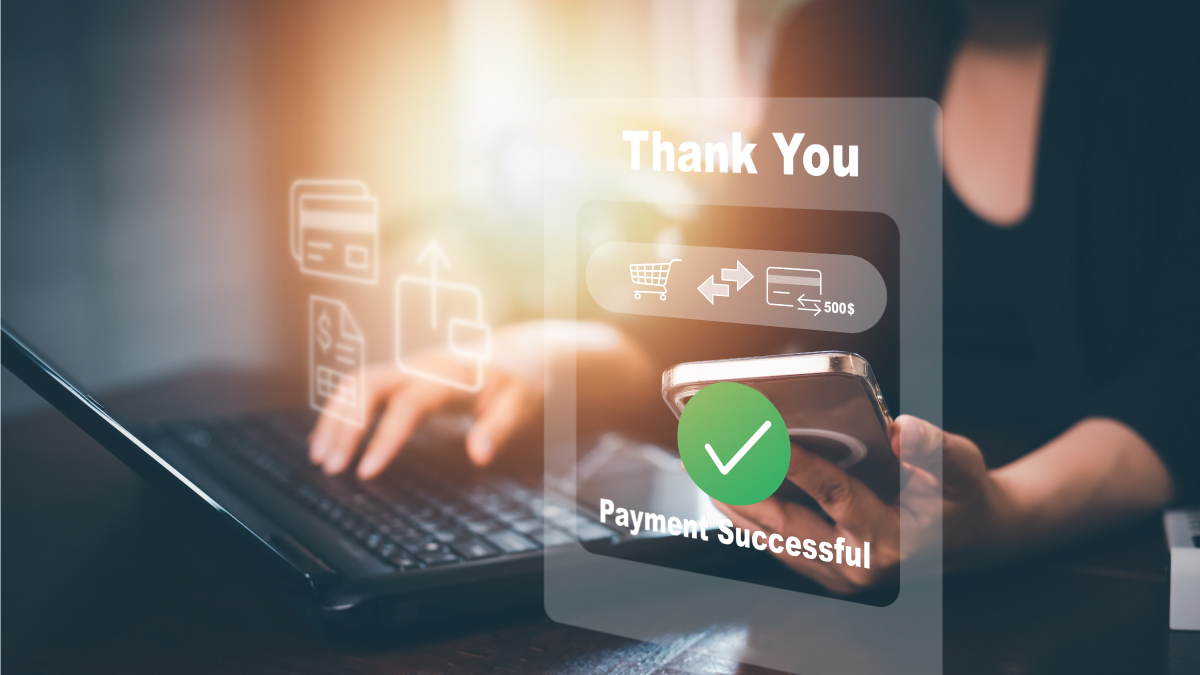How companies and consumers pay for products and services is rapidly evolving. According to the 2023 Global Payments Report, account-to-account or real-time payments are on the rise. The digital wallet ascension is nearly complete, buy now pay later (BNPL) continues to evolve, and when it comes to cryptocurrencies, options are emerging as a payment method.
Do these payment choices mean that our reliance on paper money is ending? According to financial experts, the answer is… probably. What does this mean for businesses that primarily rely on cash or other legacy payment methods like checks? Let’s look at the ins and outs of real-time payments, how enterprises can benefit from implementing real-time payments, and the challenges of creating a real-time payments ecosystem. But first, let’s define real-time payments and what is driving its unprecedented growth.
Real-time payments: The What and Why
The term real-time payments refers to any account-to-account transfer of funds that provides the payee with immediate availability of funds. It also delivers instant confirmation of payment. The real-time payments process is quite simple and at a high level consists of 5 steps.
- Payment is initiated
- The transaction verified
- Transaction is approved or rejected
- Funds transfer
- Transaction complete
Now that we’ve covered what real-time payments are, let’s look at why this payment method is quickly gaining traction. Japan introduced real-time payments in 1973, but it’s only been over the last few decades that its adoption became more widespread. Launching in 2017, the United States has been lagging when it comes to real-time payments. However, like other nations, the U.S. is rapidly making up for its slow introduction.
While real-time payments were already being used in many nations, the pandemic accelerated the adoption of this touchless payment method. According to a Deloitte Analysis, the top three high-level drivers for the onboarding of real-time payments are:
- increasing customer demand
- Growing regulatory push
- Improving market infrastructure
Let’s delve a bit deeper into why real-time payments adoption is rapidly expanding.
Sweeping the Finance Scene
From a consumer perspective, it’s all about convenience, speed, and cost – and real-time payments deliver. For businesses, they can provide a centrally-driven payment option, strengthen their cash flow, improve operational efficiency, and deliver seamless, intuitive, and frictionless customer experiences. However, real-time payments would not be possible if it weren’t for new regulatory mandates and initiatives, as well as technology advancements. Governments across the globe are actively putting programs in place to reduce reliance on cash, gain a better understanding of how real-time payments benefit its gross domestic product (GDP), as well as how it provides advantages to local businesses.
Current payment technologies rely on closed-loop networks, siloed systems, and legacy “rails” to work. These are infrastructure and processes that move the money between the payer and the payee. “Rails” enable the immediate transfer of funds between banks and financial institutions, facilitating instant payment processing and settlement.
When it comes to technology, real-time payments are a game changer. However, in most cases it requires a complete overhaul of backend payment processing systems. While this is still a work in progress, the new infrastructure is rapidly evolving and is expected to enable features such as a proxy service that maps identifiers to an account number, as well as support value-added programs like BNPL, request-to-pay, and others.
Although cross-border payments are still dominated by bank-to-bank relationships and processes, global payments has been the focus of Group of Twenty (G20) and the Financial Stability Board (FSB). Even with today’s hiccups of adopting real-time payments for cross-border global payments, real-time payments are fast becoming a recognized and sought after payment method. In fact, in 2022 real-time payments was valued at $17.57 billion and is expected to grow at a compound annual growth rate (CAGR) of 35.5% by 2030.
Real-time payments: Benefits Delivered
When it comes to benefits, real-time payments deliver to both the payee and the payer.
- Payment execution happens in seconds, at any time and from anywhere.
- Businesses are assured of payment for products provided or services rendered.
- Once the transaction is complete, organizations can immediately put working capital to use.
- Payment transactions can be embedded directly into commerce flows, quickening the reality of global trade.
- Satisfies consumer demand for instant access to funds.
- The refund and disbursement processes are expedited.
- Payers have improved visibility into their finances, reducing or eliminating penalties and overdraft fees.
- Value-added services such as QR payments, social payments, and request-to-pay can be offered.
- Operational costs are reduced through either lower (or no) credit card interchange fees.
- Revenue streams can be expanded by offering products and services to new markets.
- Cash flow management is enhanced and improved.
- Conformance to ISO 20022 helps improve business performance, increases operational efficiencies, and reduces the risk of fraud.
- By using a secure system for bi-directional communication, introducing multi-factor authorization, confirmation mechanisms, and device binding, as well as offering more secure payment options such as request-to-pay, security is increased.
Want to dig a bit deeper into real-time payments and its benefits? Check out our blog – Maximizing Profitability with Enterprise Payment Solutions.
Risks and Challenges to Consider
Given real-time payments rapid rise in popularity and the high expectations customers have placed on this payment method, the pressure is on to expand the ecosystem. For instance, there are currently 79 countries with at least one real-time payments scheme in operation, however the payment infrastructures remain highly country specific – hindering their ability to provide instantaneous payments across borders. In fact, cross border payments can take days from initialization to transaction completion. For a true cross-border real-time payment solution to become a reality, payment infrastructures will need to be built out and expanded.
It should come as no surprise that a significant concern is around security, fraud, and compliance. Given the speed, finality, and 24/7 operation of real-time payments, combatting fraud requires financial institutions to develop a holistic and real-time solution for detecting and preventing fraud across all electronic funds transfer channels and payment origination devices and mechanisms. Furthermore, this will need to be done in conjunction with maintaining regulatory compliance.
Since many financial institutions (FIs) still rely on legacy systems designed to facilitate batch processing, they will find these systems lacking in their ability to handle real-time payments around the clock availability and will struggle to individually process each transaction. FI’s have a few choices when it comes to modernizing their systems. They can use application programming interfaces (APIs) to break down the inherent siloes or they can acquire systems that have been built to seamlessly and securely support the large volumes of real-time transactions.
Are You Ready for Real-Time Payments?
Now more than ever, you need a system that can quickly, easily, and securely provide payment diversity. BillingPlatform provides a flexible and scalable platform that was uniquely built with future payment schemes in mind. Our cloud-based platform gives companies the power to respond to customer billing requirements and meet their demands for new billing methods.
With BillingPlatform you get a complete solution that supports all of your business requirements – any product, any service, any business model. The unmatched agility of our platform gives you the capability to support ever-changing business and billing needs. With us you get the financial control you need to run your business with greater efficiency, accuracy, trust, and profitability.
Are you (and your billing system) ready for real-time payments? Contact our team to get started today.



